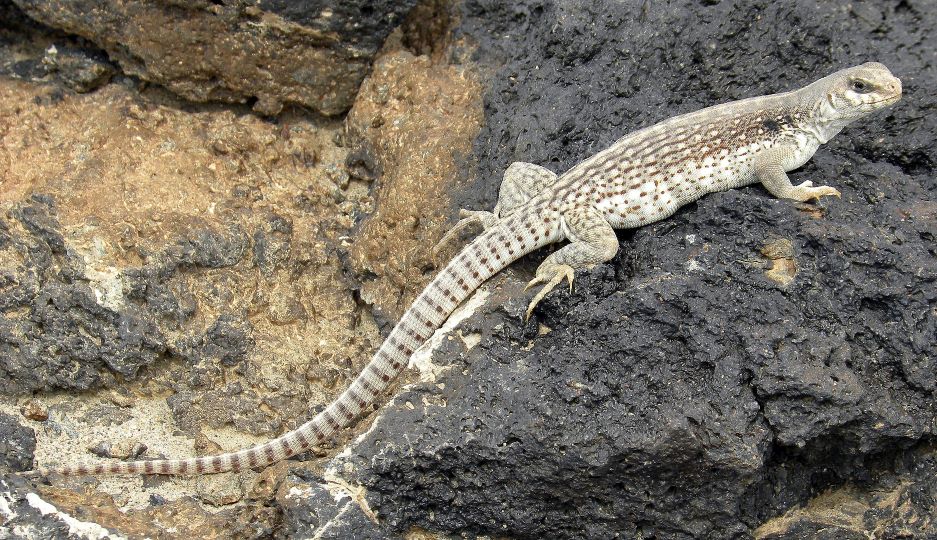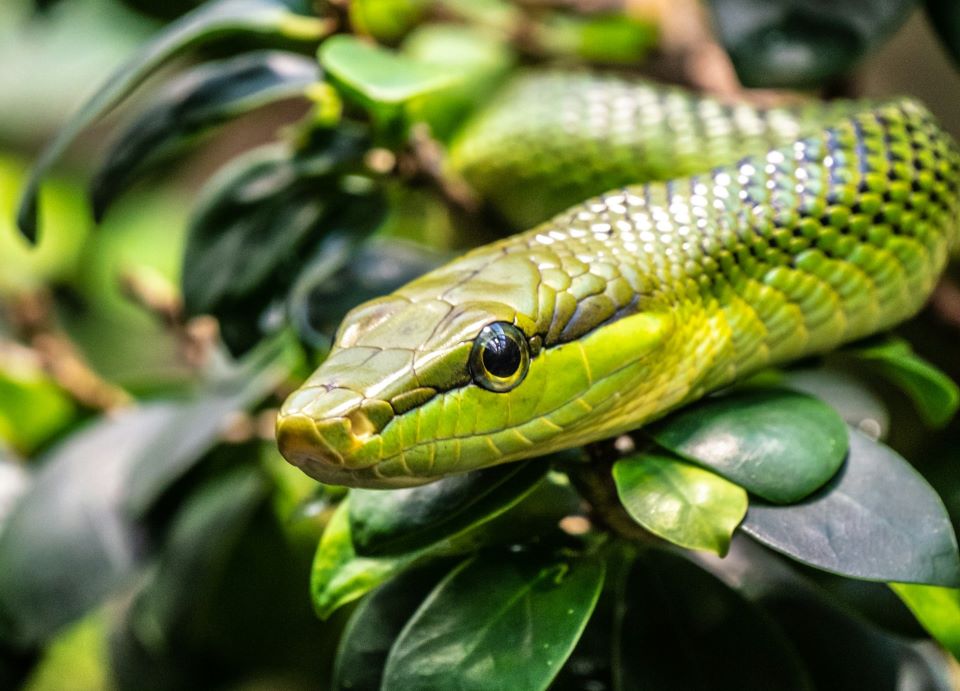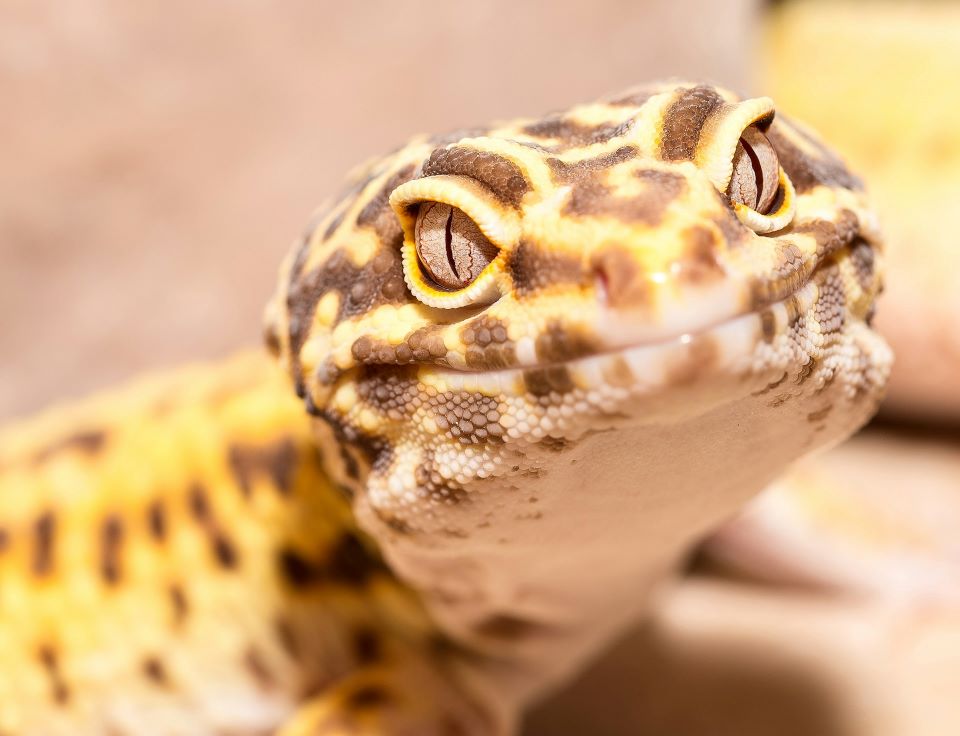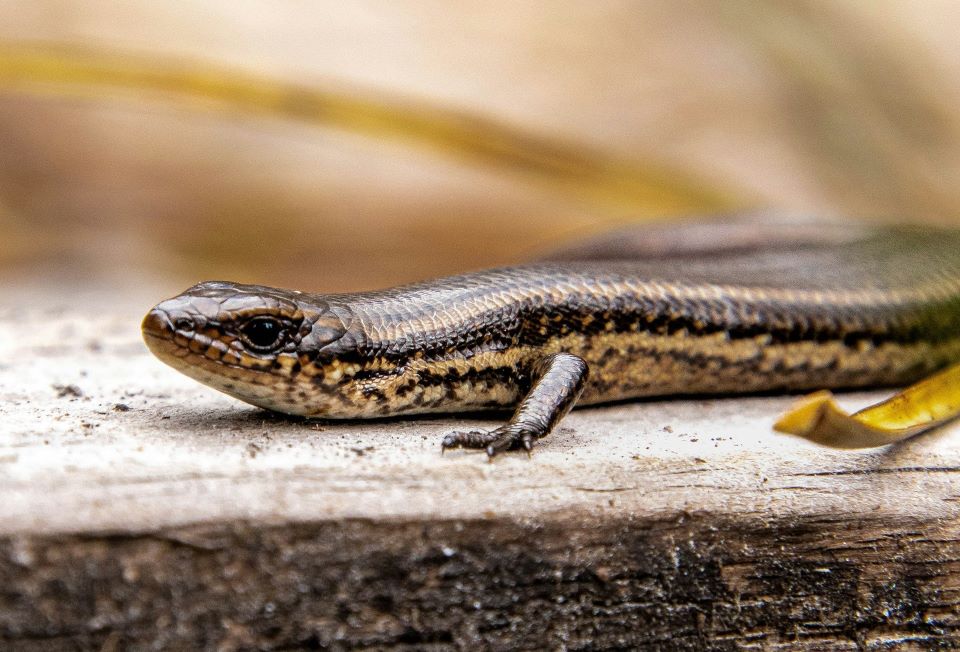Exhibit: Extant Squamates

Introduction to Modern Squamates
| Taxon/Clade | Estimated Emergence Time |
|---|---|
| Crown Squamata | ~ 190-206 Ma |
| Toxicofera | ~ 155 Ma |
| - Iguania | ~ 98-79 Ma |
| - Anguimorpha | ~ 155 Ma |
| - Serpentes | ~ 100 Ma |
| Gekkota | ~ 190-155 Ma |
| Scincomorpha | ~ 190-155 Ma |
Squamates—the order encompassing lizards, snakes, and amphisbaenians— represent one of the most successful and diverse reptile lineages. With over 12 000 species spanning nearly every habitat on Earth, their evolutionary journey has been one of adaptability and innovation. Their history is marked by anatomical and behavioral refinements that let them occupy niches from rainforests to deserts.
Their specialization shows up in sensory adaptations, limb modifications, and scale variations. Some use their tongues to detect chemical traces, while others rely on cryptic coloration for survival. Whether ambush predators or swift foragers, squamates have refined their strategies over millions of years to not just persist but flourish.
Geographic Distribution
Squamates are found on every continent except Antarctica, thriving in an extraordinary range of habitats. Some species inhabit dense tropical forests, where their bodies and behaviors reflect the interplay of light and shadow. Others endure arid deserts, relying on burrowing, nocturnality, or thermoregulation to cope with extreme temperatures. In temperate regions, many brumate during colder months, re-emerging when conditions become favorable.
Despite their adaptability, habitat destruction and climate change continue to threaten squamate populations. Some species adjust to shifting conditions, but others face rapid declines. Beyond survival, the well-being of individual squamates is also at stake, as environmental pressures disrupt their natural behaviors and limit their ability to thrive.
Key Groups
Recent phylogenetic studies have redefined the traditional classification of squamates, leading to the recognition of new clades based on genetic data. These clades provide a more accurate understanding of the evolutionary relationships among these reptiles.
Toxicofera
The Venom-Bearing Clade

Toxicofera, meaning “toxin bearers,” is a clade that includes all venomous reptiles and their non-venomous relatives. It comprises three major lineages:
- Iguania: iguanas, chameleons, agamid lizards—known for specialized tongues and unique locomotion.
- Anguimorpha: monitor lizards, Gila monsters, and kin—robust bodies and, in some, venomous bites.
- Serpentes: all snakes—limbless bodies and diverse feeding strategies (constriction, envenomation).
The recognition of Toxicofera has shed light on the evolutionary origins of venom in reptiles, suggesting a single, ancient origin for venom production in this clade.
Further reading: Wikipedia: Toxicofera
Gekkota
The Master Climbers

Gekkota encompasses geckos and pygopods (legless lizards). Geckos are renowned for their specialized toe pads that let them adhere to nearly any surface, their vocalizations for social communication, and their ability to regenerate lost tails.
Further reading: Wikipedia: Gekkota
Scincomorpha
The Burrowers and Skinks

Scincomorpha includes skinks, whiptail lizards, and common European lizards. Skinks—smooth, shiny scales and elongated bodies—often have reduced limbs as a burrowing adaptation. Whiptails are known for speed and, in some species, parthenogenetic reproduction (females reproduce without males).
Further reading: Wikipedia: Scincomorpha
Detailed description of the video
This video contrasts the nesting behaviors of two very different North American species: the warm-blooded American robin and the cold-blooded five-lined skink. Over roughly two minutes, the narrator highlights how each mother protects and incubates her eggs during spring in the woodland.
Scene 1 (00:00-00:06): A verdant North American woodland in spring; sunlight filters through fresh green leaves. A narrator’s voice begins: “Lizards, for the most part, are not known for being caring parents, but there are exceptions.”
Scene 2 (00:06-00:12): Cut to a close-up of a female American robin perched in a low tree. She sits motionless in her nest, nestled among slender twigs and fresh green leaves. The narrator continues: “It’s spring in the woodlands of North America. An American robin is nesting, warming her eggs with the heat generated by her own body…”
Scene 3 (00:12-00:20): Switch to the forest floor, where a female five-lined skink lies basking on a sunlit rock. Her oil-slick scales shimmer in greens and blues. The narrator says: “…and below on the forest floor, a five-lined skink is warming her cold-blooded body by basking in the sun.”
Scene 4 (00:20-00:27): Return to the skink: she slowly raises her head, eyes alert. The narrator adds: “So that she can do the same.”
Scene 5 (00:28-00:36): A wider shot of the woodland floor reveals hidden hollows lit by scattered sunbeams. The narrator explains: “She has a nest below the rock. Temperatures can get quite chilly in these woodlands, and she warms her eggs by transferring to them the heat she’s collected from the sun.”
Scene 6 (00:37-00:45): Split-screen view: top half shows the robin shifting slightly in her nest; bottom half shows the skink coiling protectively around her eggs. The narrator states: “She takes just as much care of her eggs as the robin.”
Scene 7 (00:46-01:00): Time-lapse sequence (one month later). In both halves of the split-screen, cracks appear in the eggshells. The narrator notes: “A month later, her eggs are hatching…”
Scene 8 (01:01-01:12): Left side: the robin’s nestlings emerge, fluffy and pink, mouths wide open. Right side: tiny skinks wriggle free of their eggs on the forest floor. The narrator observes: “The robin’s eggs have hatched too—her nestlings are helpless and need constant feeding. The young skinks, however, are already capable of finding food for themselves.”
Scene 9 (01:13-01:23): The robin flutters down to gather worms and returns to feed her nestlings. On the forest floor, miniature five-lined skinks scuttle away from their mother. The narrator concludes: “Within a day or so, they’ve left their mother and are independently exploring the woodland floor for themselves.” Final shot (01:24-end) A gentle pull-back of the woodland, sunlight dappling leaves. No narration—the video fades to black.
End of video description.
Conservation Efforts
Squamates have survived mass extinctions, but modern threats are placing unprecedented pressure on their populations. Habitat destruction, climate change, and the wildlife trade jeopardize not only their existence but their quality of life. While conservation initiatives work to protect species from extinction, ensuring the well-being of individuals is just as vital. Efforts such as habitat restoration, responsible captive care, and ethical research practices contribute to the welfare of these animals.
The continued survival of squamates is not just about numbers—it is about preserving the intricate behaviors, adaptations, and lives that make them an essential part of our planet’s biodiversity.